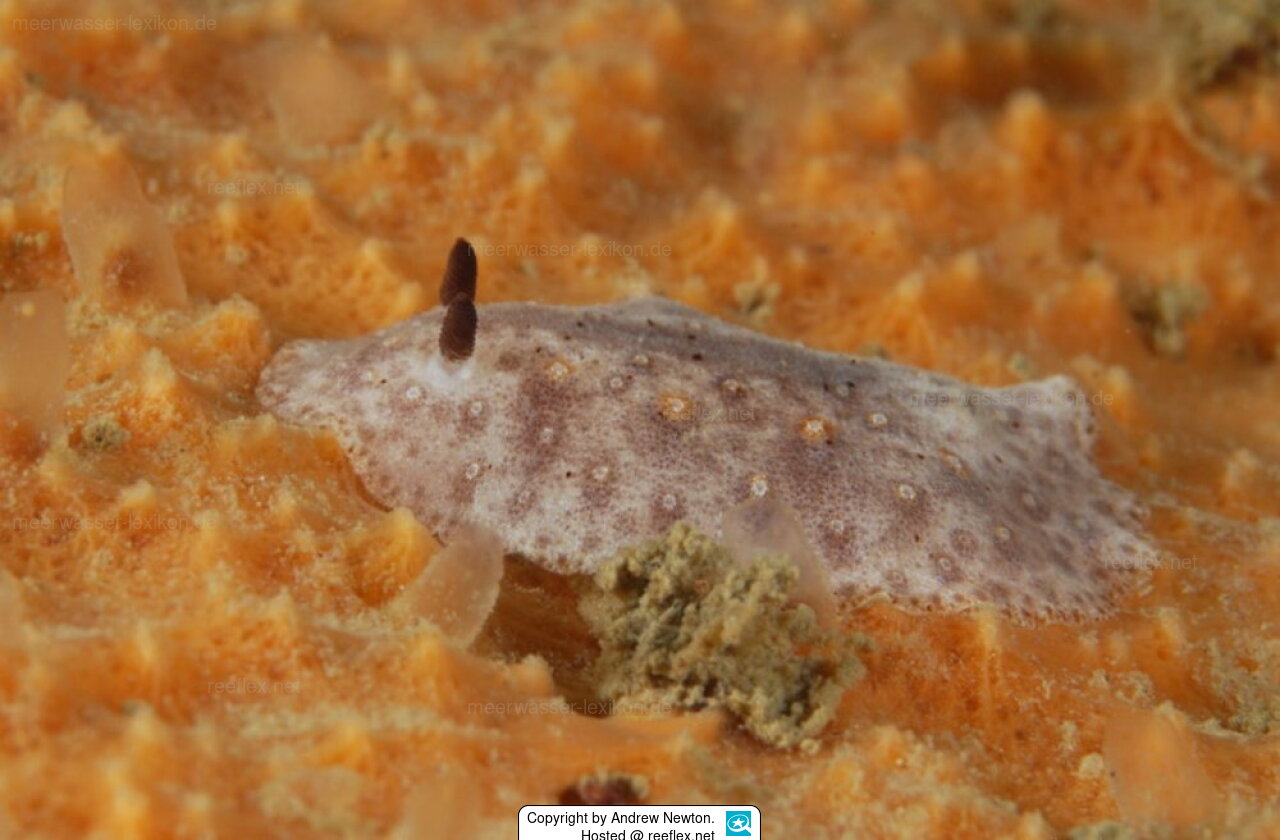Info
Paradoris dubia (Bergh, 1904)
The mantle is translucent white with varying degrees of brown pigmentation, with some animals being very pale while others appear dark brown. Gray-brown spots are scattered on the back, some of which surround a ring of white glands, which in turn surround a low, rounded pustule. These glandular structures are very characteristic of this species and vary greatly in number. In some animals there are many scattered along the back, while in other animals there are only a few on each side of the coat skirt.
There are 7–9 tripinnate gills. They are transparent with brown speckles and, when stretched out, are relatively small for the size of the animal. The rhinophore legs are dark brown or black. The underside of the coat, the sides and the sole of the feet are translucent whitish with scattered dark brown spots. The brown mottling varies greatly, some specimens have almost none while others have many.
As a food specialist, Paradoris dubia feeds on certain sponges. Visually, they look like white clumps of sponge on tidal rocks. If there are problems, a milky secretion is secreted from the glands on the back.
Synonymised names:
Alloiodoris nivosus Burn, 1958 · unaccepted
Discodoris dubia Bergh, 1904 · unaccepted (original combination)
Discodoris egena Bergh, 1904 · unaccepted
Paradoris leuca M. C. Miller, 1995 · unaccepted
The mantle is translucent white with varying degrees of brown pigmentation, with some animals being very pale while others appear dark brown. Gray-brown spots are scattered on the back, some of which surround a ring of white glands, which in turn surround a low, rounded pustule. These glandular structures are very characteristic of this species and vary greatly in number. In some animals there are many scattered along the back, while in other animals there are only a few on each side of the coat skirt.
There are 7–9 tripinnate gills. They are transparent with brown speckles and, when stretched out, are relatively small for the size of the animal. The rhinophore legs are dark brown or black. The underside of the coat, the sides and the sole of the feet are translucent whitish with scattered dark brown spots. The brown mottling varies greatly, some specimens have almost none while others have many.
As a food specialist, Paradoris dubia feeds on certain sponges. Visually, they look like white clumps of sponge on tidal rocks. If there are problems, a milky secretion is secreted from the glands on the back.
Synonymised names:
Alloiodoris nivosus Burn, 1958 · unaccepted
Discodoris dubia Bergh, 1904 · unaccepted (original combination)
Discodoris egena Bergh, 1904 · unaccepted
Paradoris leuca M. C. Miller, 1995 · unaccepted







 Andrew Newton, Australien
Andrew Newton, Australien







